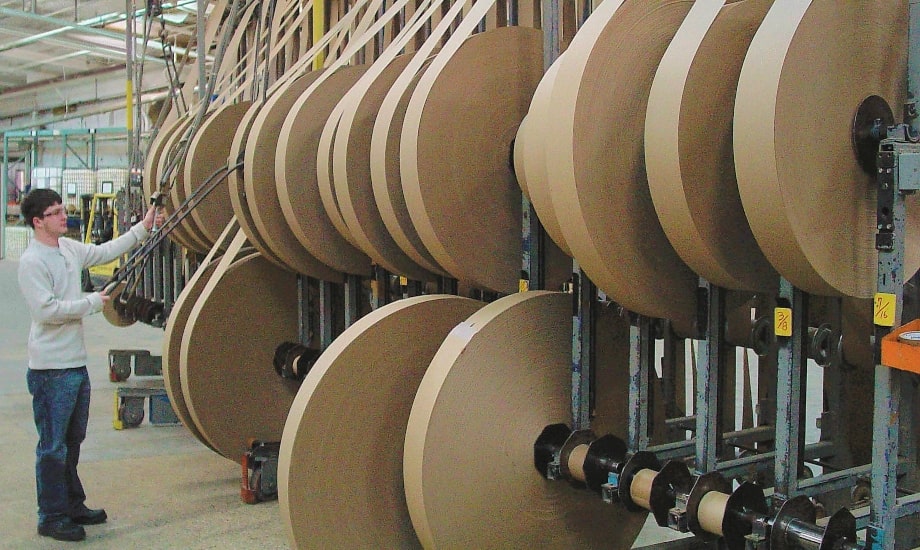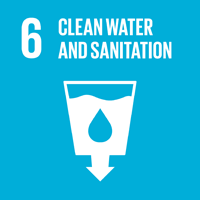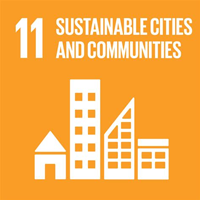أبرز الأحداث
- Greif’s approach to water management stems from our responsibility to protect key resources for future generations. A critical piece of this approach is maintaining compliance with local and global water regulations that apply to our operations across the world.
- Our water management priorities focus on efficient and responsible water use in our mills and in water-scarce regions throughout our operations. We leverage standardized environmental data dashboards across our mills enabling us to effectively manage water use in our paper production processes.
- In 2024, we furthered our progress in water conservation initiatives. We eliminated direct discharges into local waterbodies from our Baltimore mill. In the future we continue to aim to reduce direct discharges at other facilities, with plans to phase out discharges at the Taylors mill by 2026.
- Our water conservation efforts contributed to a 10 percent decline in water withdrawal and a 2 percent decline in water discharges since 2019.
لماذا الماء مهم؟
Greif prioritizes responsible management of our water resources, aiming to mitigate negative impacts associated with water withdrawals, discharges, and stormwater runoff. We recognize that water is a vital resource, and we strive to safeguard it for the benefit of future generations. Following The Greif Way, we seek opportunities to contribute to positive outcomes for the environment and for communities with whom we share a water source. To that end, we pursue opportunities to improve water efficiency and elevate water quality across our organization with a focus on water-intensive operations at our mills. In efforts to comply with water quality requirements, water discharged from our facilities undergoes thorough treatment, whether on site or by a trusted third party. All treatment measures strictly adhere to relevant regulations so that the discharged water meets high standards of health and safety for wildlife and the local communities.
Our Approach
إن التزامنا بالحفاظ على المياه العالمية وكفاءتها موضح في سياسة البيئة والصحة والسلامة. We enlist our EHS team to monitor regulatory compliance and implement optimal practices in water treatment and recycling across all facilities. The EHS team also proactively oversees water usage in critical facilities, including those in water-stressed areas to help optimize our water footprint. Within our environmental structure, we maintain a robust compliance management system with dedicated support. Greif champions and empowers local management teams to improve water efficiency, enhance water quality, minimize impact on local water sources, and reduce associated costs. Our approach extends to managing water discharge in strict compliance with individually allocated water permits.
We recognize water is a critical element of the manufacturing processes at our mills and understand the impacts irresponsible water consumption can have on local communities and ecosystems. To support sustainable water usage at Greif, we have worked diligently to deploy advanced water management practices at paperboard mills within our Sustainable Fiber Solutions business, which accounts for approximately 90 percent of our total water usage. At these sites, we have implemented reduction and recycling processes including collecting HVAC cooling water and compressor cooling water for reuse at our Riverville mill, installing ultra-low water consumption mechanical seals on process pumps at our Massillon mill, and installing effluent treatment plants at multiple mills that not only reduce biochemical oxygen demand but also reduce water consumption overall. We plan to evaluate sustainable water management practices moving forward with ambitions to reduce non-contact cooling water discharges at our paper mills.
Mill Water Efficiency Data (compared to 2019 baseline)
- 2024 Mills Production Decrease: 18 percent
- 2024 Total Water Withdrawal Decrease: 10 percent
- 2024 Total Water Discharge Decrease: 2 percent
- 2024 Total Water Consumption Decrease: 65 percent
- 2024 Water Consumption Rate (Water Consumption per MT of Production) Decrease: 46 percent
Effective management of untreated stormwater is central to Greif’s water strategy, upholding our ambitions to protect local water resources. To carry out this approach, we place a strong emphasis on effective stormwater management practices across our plastic and steel facilities. Regular and thorough stormwater sampling and testing are essential parts of our operations, maintaining strict adherence to safety standards and regulations while identifying continuous improvement opportunities. We provide comprehensive annual training to all relevant colleagues to help build a culture of responsible water management throughout our organization.
Preventing and responding to unforeseen water events like spills are crucial aspects of our approach to water management. In addition to site-specific stormwater pollution prevention plans and robust spill prevention controls at our key facilities, we have comprehensive global contingency plans and emergency procedures designed to address and mitigate any potential or actual spills. Our operations emphasize compliance, utilizing our Environmental Management System (EMS) to track spills or releases that may impact groundwater and soil and identify corrective actions to remediate such events. We are currently evaluating potential improvements to the EMS to capture additional quantitative data to track trends over time and improve our incident response efforts.
An essential aspect of our approach to water management is compliance with emerging water-related regulations. By adopting sustainable water practices, we can minimize potential sources of noncompliance related to water management while simultaneously improving operational efficiency. Responsible water management also drives the mitigation of risks that pose a threat to Greif’s daily operations and long-term business success, specifically in water-stressed regions where we operate. Annually, we use the World Resources Institute’s Aqueduct Water Risk Atlas tool to consider which of our facilities operate in areas of water stress. To mitigate negative impacts in these regions, we have adopted policies and practices designed to reduce excess water consumption such as replacing faulty valves, promoting water recycling, installing touchless faucets and harvesting rainwater. Greif recognizes that operating responsibly within water permit requirements at every facility is critical to accomplishing our mission of securing water sources for future generations.
Goals, Progress, & Performance
هدف 2025:
- تقليل الطلب على الأكسجين الكيميائي الحيوي (BOD) المنبعث بالكيلوجرام بنسبة 10 في المائة لكل طن متري من الإنتاج من مطاحن ريفيرفيل وماسيلون باستخدام خط الأساس لعام 2014 بحلول نهاية السنة المالية 2025.
As of the end of 2024, we have reduced the biochemical oxygen demand by 67.6 percent from our 2014 target baseline of 1.40.
إن أغلب استهلاكنا للمياه يحدث في مصانع الورق المقوى، حيث نعيد استخدام المياه عدة مرات قبل معالجتها وتصريفها. وتمثل مصانعنا ما يقرب من 90% من استهلاكنا العالمي للمياه.
في عام 2022، استعنا بمستشار خارجي لتقييم استخدام المياه في مصانع الورق المقوى لدينا. وقد طورت هذه الدراسة الشاملة نماذج مياه لكل من مصانعنا، وكشفت عن فرص جديدة لتقليل استهلاك المياه. في عام 2023، حددنا ثلاثة مشاريع بنود قابلة للتنفيذ محددة للحد من استخدام المياه في مصانعنا، ويتم تقييمها حاليًا للتنفيذ على مدى العامين المقبلين.
Greif utilizes key performance indicators to monitor water usage and wastewater treatment. We continuously streamline our environmental data dashboards across our facilities to develop a more comprehensive understanding and effective management of our water, effluents, and energy data. Improvements in this area enable us to consistently discover and leverage water efficiency opportunities. Please see our report’s أنظمة إدارة البيئة section for more information about our evolving approach to environmental data oversight.
ممارسة الاقتصاد الدائري
في مطحنة أوستيل التابعة لجريف في جورجيا، بدأنا مشروع تجفيف بقايا مياه الصرف الصحي لتحويل النفايات إلى وقود حيوي. تقوم ممارسة الاقتصاد الدائري بكنس المواد الصلبة السميكة من بطانية الرواسب العائمة إلى مكبس تجفيف المياه. يتم تجفيف المواد الصلبة القابلة للتدفق حتى يمكن نقلها إلى مكان لتجف في الهواء، وخلطها بمواد أخرى، واستهلاكها كوقود إضافي للغلاية. لا تسمح هذه العملية بإعادة استخدام المواد للحصول على أقصى استفادة من البداية إلى النهاية فحسب، بل إنها توفر أيضًا رسوم التخلص من مكب النفايات في المنشأة.

تخفيض استهلاك المياه في مطحنتنا في فلورنسا، كنتاكي
في أواخر عام 2019، قامت منشأة Greif's Florence بولاية كنتاكي بتثبيت منشأة لمعالجة مياه الصرف الصحي لتقليل حمولة النفايات الخطرة وإعادة تدوير المياه إلى المدينة. تعمل العملية عن طريق إدخال المياه في النظام، وإزالة ما يقرب من 100% من الملوثات من عملية الطلاء وإرسال المياه النظيفة إلى محطة المعالجة المحلية. ثم يتم إعادة تدوير المياه بواسطة محطة المعالجة لإعادة توزيعها على المجتمع. يتم التخلص من المواد المتبقية من العملية عبر القمامة بدلاً من النفايات الخطرة. مع دخول المعدات إلى الإنترنت بالكامل في منتصف عام 2020، لم تعمل العملية على خفض النفايات الخطرة الناتجة عن المنشأة بشكل كبير فحسب، بل أدت أيضًا إلى تقليل تكلفة النفايات بمقدار $40,000 شهريًا.





